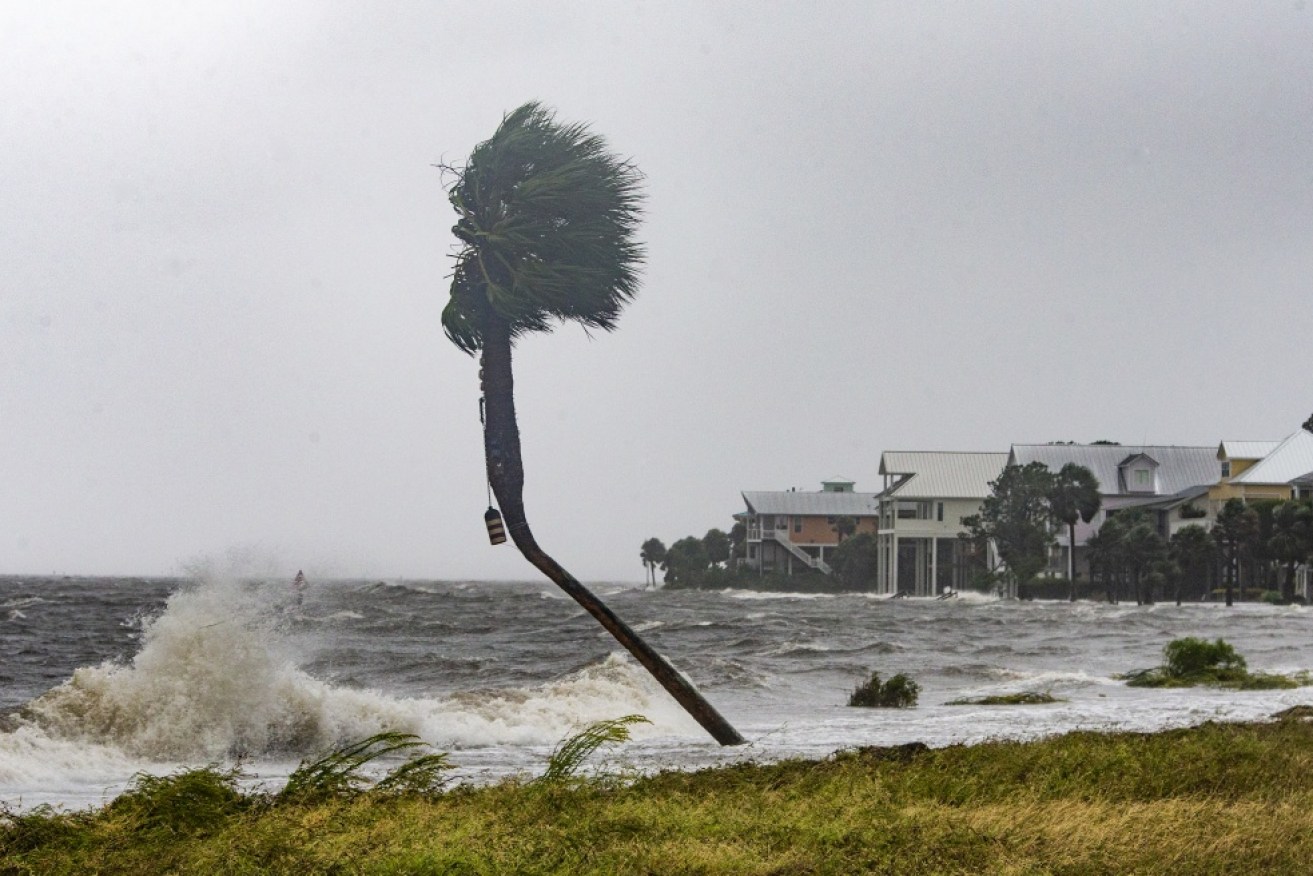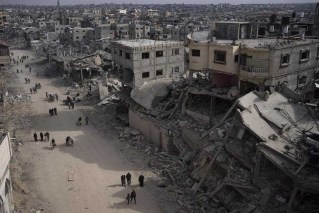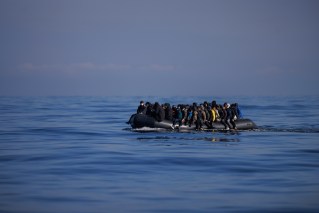‘Unimaginable devastation’: Biggest storm in a century slams into Florida


The storm surge and waves from Hurricane Michael batter the beachfront homes in the Florida Panhandle Photo: Getty
Florida has been hit by the first devastating effects of Hurricane Michael as the biggest storm to strike the region in a century made landfall Thursday morning (AEST).
The powerful Category 4 storm brought torrential rainfall, hurricane-force winds of up to 250 km/h and life-threatening water surges to the Florida Panhandle.
Florida Governor Rick Scott warned of “unimaginable devastation”, saying it would be the worst storm in 100 years.
CNN’s John Berman who is currently in Panama City Beach, Florida, said the rain felt “like powerful razor blades” on his face.
Photos and video posted on social media showed massive winds and houses submerged by coastal surges, with worst devastation expected.
A look at what houses in #Mexico Beach, #Florida look like right now. This is a follow up from the previous clip posted. They are now submerged and were no match for #HurricaneMichael (via Tessa Talarico) #Hurricane #Michael #HurricaneMichael2018 pic.twitter.com/GJENrhFJha
— Josh Benson (@WFLAJosh) October 10, 2018
Michael caught many by surprise with its rapid intensification as it churned north over the Gulf of Mexico on Wednesday.
Shortly after 11am local time it was carrying top winds of 150 miles per hour (241km/h), making it a very dangerous Category 4 storm on five-step Saffir-Simpson scale, the National Hurricane Center said.
Authorities told residents along the affected areas of Florida’s northwest coast that they had run out of time to evacuate and should hunker down.
The storm caused major disruption to oil and gas production in the US Gulf of Mexico.
Michael’s core was forecast to make landfall on Wednesday afternoon on Florida’s Panhandle and could drive sea water levels as high as 14 feet (4.3m) above normal in some areas, the authorities said. The storm could still strengthen further before coming ashore, it said.
As the outer bands arrived, ocean water was already flooding parts of Port St. Joe.
Mayor Bo Patterson said about 2500 of the town’s 3500 people were still there, including about 100 in a beachside area who did not follow a mandatory evacuation order.
The two bridges leading out of Port St. Joe were closed, meaning no one could get out now.
“People are finally getting it, that this is going to be pretty strong,” Patterson said.
“This happened so quickly, we weren’t exactly prepared.”
#HurricaneMichael intensified as the storm made landfall near Mexico Beach, Florida, at around 1:30 p.m. ET. @NOAA's #GOESEast satellite captured this view of the Cat. 4 hurricane moving ashore. Latest updates from @NHC_Atlantic: https://t.co/gcFrOMm2RR pic.twitter.com/ZIqmQslbYP
— NOAA Satellites (@NOAASatellites) October 10, 2018
Michael grew from a tropical storm to Category 4 hurricane in about 40 hours.
“Satellite images of Michael’s evolution on Tuesday night were, in a word, jaw-dropping,” wrote Bob Henson, a meteorologist with weather site Weather Underground.
People in coastal parts of 20 Florida counties had been told to leave their homes. Much of the area is rural and known for small tourist cities, beaches and wildlife reserves, as well as Tallahassee.
Hurricane center director Ken Graham said on Facebook that Michael would be the worst storm in recorded history to hit the Panhandle.
“Going back through records to 1851 we can’t find another Cat 4 in this area, so this is unfortunately a historical and incredibly dangerous and life-threatening situation,” he said.
Apalachicola Mayor Van Johnson said his city, which could suffer some of the worst of the storm surge, was under mandatory evacuation orders.
“My greatest concern is that some people are just now starting to take this storm seriously and are evacuating,” he told CNN.
“And I just hope the others that have not made that decision get out while the roads are still passable and before the bridges close.”
I seriously have no words to describe this, it’s awesome but equally terrifying #HurricaneMichael pic.twitter.com/0Y8HQJub1Z
— Kirsten Fiscus (@KDFiscus) October 10, 2018
President Donald Trump declared a state of emergency for the entire state of Florida, freeing up federal assistance to supplement state and local disaster responses.
Authorities warned of coming disruptions for those in Michael’s path. About 10,000 customers were already without power around midday.
Helen Neal, 88, and her husband, J.W. Neal, 87, preferred to take their chances in a hotel rather than in their two-story beachfront house about a mile away in Panama City.
“We just finished renovating and updating,” she said.
“We’re kind of nervous. God willing we’ll still have some place.”
About 2500 National Guard troops were deployed to assist with evacuations and storm preparations, and more than 4000 others were on standby. Some 17,000 utility restoration workers were also on call.
-With AAP








